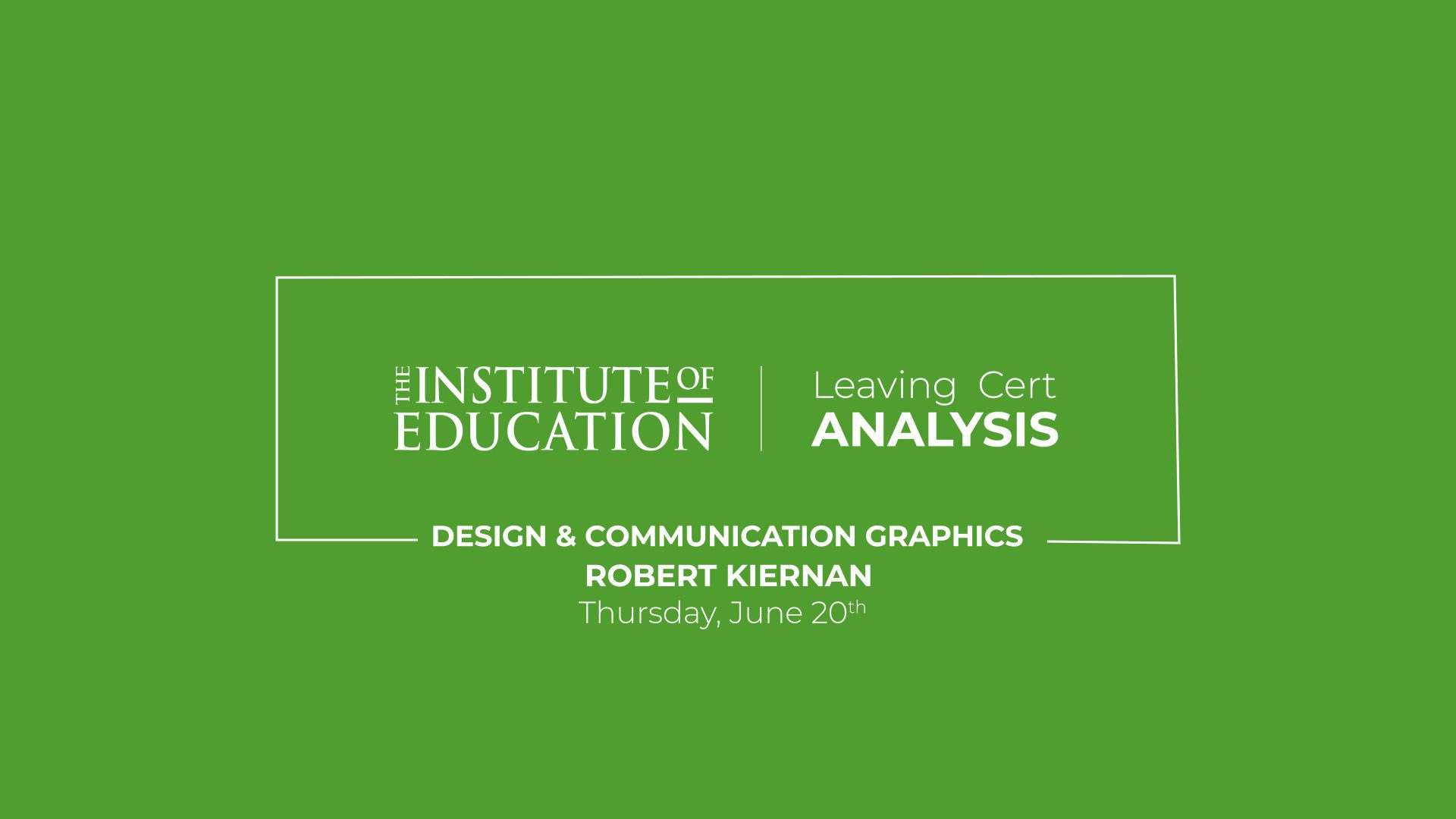Reaction to 2024 Leaving Certificate Design & Communication Graphics (Higher Level) by Robert Kiernan, Design & Communication Graphics teacher at The Institute of Education.
- Some concepts swapped places from their predicted sections to the surprise of some but relief of others.
- Some questions were reminiscent of older papers from 2009-2015
Students opening the paper and seeing perspective in Section A-1 will be surprised. Many will have expected axonometric axes in Section A with the more complex and time-consuming perspective in the longer Section B. However, a short, precise question on perspective meant that much of that laborious work was circumvented, so many will have preferred this version of events. If a student was too rigid in their plan of how to navigate the paper they may have been rattled, but ultimately that shock should give way to relief. Questions A-2 and A-3 were nice standard questions, with the skew lines of the latter showing a resurgence of a topic absent from the most recent papers. A-4 on solids in contact was unusual as there has not been a question solely dedicated to this area since 2013. While another surprise for this section, the skills involved are thoroughly covered throughout the course as transferrable, so there was nothing novel about the rudiments of this question.
Section B, Question 1 was mostly par for the course as students would be well-prepared with how to approach a dihedral angle. There was a tricky twist at the end as (d) on the inverted cone required students to think outside the box and might lead to some puzzled discussion among classmates outside the hall. B-2 was atypical in that it emphasized developments which would either be simpler in Section A or in comparable detail in Section C. Yet this unorthodoxy will be to some’s advantage as the methods involved were straightforward. The same is true for B-3’s axonometric axes method. Often perceived as not as intensive as perspective, students will be relieved to see it worth so many marks.
Due to the Covid adjustments, students had lots of choice and time to tackle Section C. C-1 and C-4 were all very familiar from previous years and remained consistent in both content and structure. For C-2 many students were likely expecting Hyperboloid of Revolution but received a Hyperbolic Paraboloid. Again, this was a very manageable question but those overly invested in predictions would have needed to take a moment and recalibrate. C-3 shows a trend emerging as the exam setter moves away from planer surfaces (cubes, pyramids etc.) towards curved ones (cones, cylinders etc). This is something present in the most recent papers and should be considered when planning for next year. The final question on assemblies suits the students who like meticulous processes and very specific conventions. The question looks busy on the page but those who have rehearsed this type of question will know exactly what to do. There is no taxing enigma to crack, or insight required, just a rigorously entrained skillset. With the abundance of time allowed since Covid a student who favours this question will have all the time they needed to really get stuck in and perfect the reproductions in a satisfying way.
This paper had a few surprises but that isn’t a negative. In fact, most will suit students once they adapt and engage with what’s in front of them rather than their exact expectations. As a subject DCG favours those who rehearse the tasks with rigour and consistency, and those students will be very pleased with this paper.

